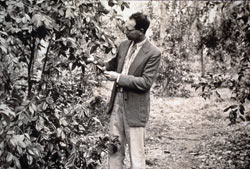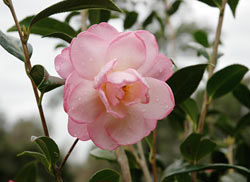
Magnolia Plantation and Gardens
Charleston, South Carolina
Camellia Collection Charleston, South Carolina


(top) C. Norwood Hastie.
Courtesy Magnolia Plantation and Gardens.
history continued
Following the Civil War, Magnolia Plantation’s garden began to draw increasing national recognition. By 1870, while the South was still recovering from the devastating effects of the Civil War, Magnolia Plantation opened its gates to the general public for tours. The European editions of Baedecker’s travel guide listed it, along with the Grand Canyon and Niagara Falls, as one of the three foremost attractions in America. Horticulturists and tourists increasingly made it a springtime pilgrimage and, by the late 1870s, Magnolia’s famous gardens were commercially available in stereo view photographs.
From 1941 until 1975, C. Norwood and Charlotte Hastie managed the plantation, maintaining the gardens’ annual tourist season and establishing a large professional nursery, which sold plants raised at Magnolia. Norwood Hastie worked diligently to preserve the garden, focusing especially on enhancing Magnolia’s collection of Japanese Camellias. He developed a sophisticated camellia breeding program, and he introduced hundreds of new varieties to the garden. By the end of his career, he was a well-respected expert on the subject, and his writings on camellia cultivation are still commonly reprinted in professional journals, forty years after they were first written. In 1972, Magnolia Plantation and Gardens was listed on the National Register of Historic Places.